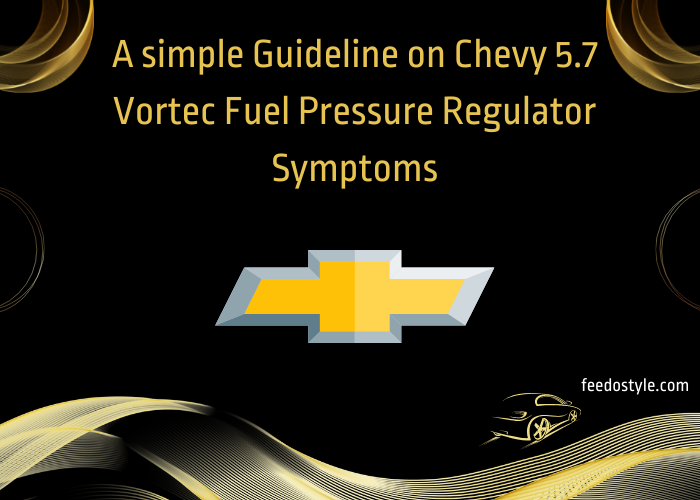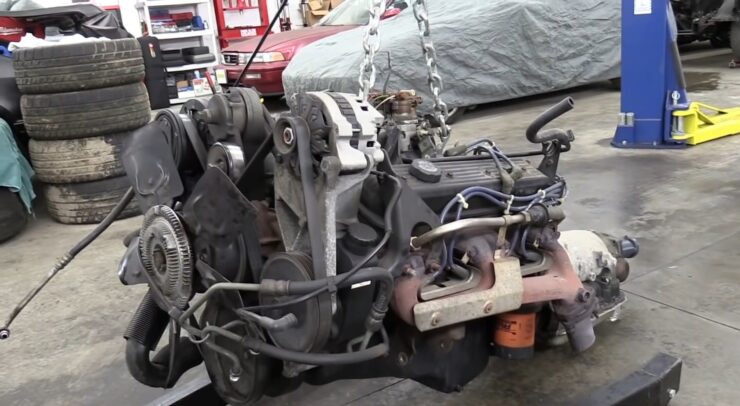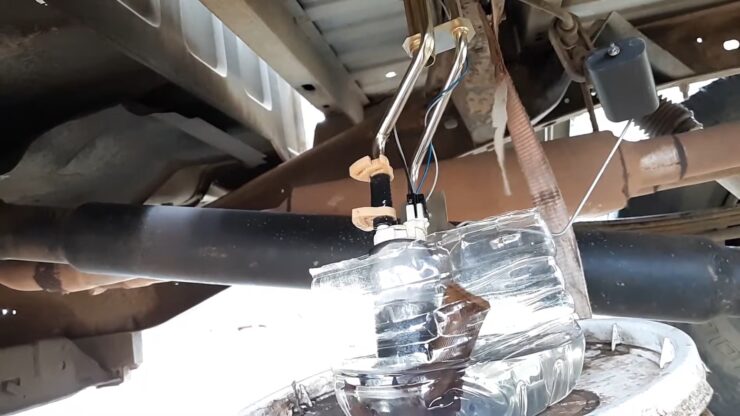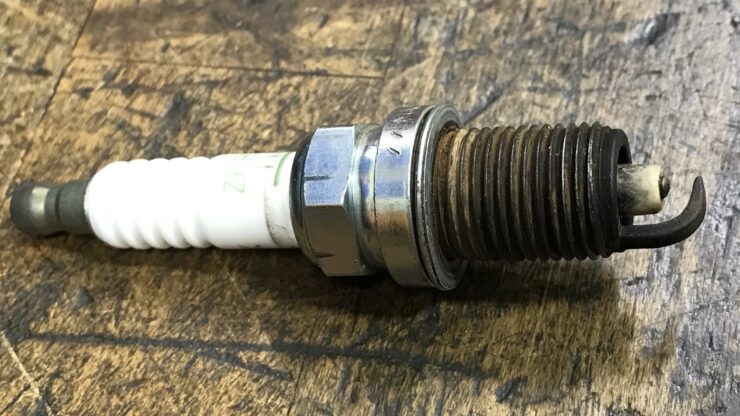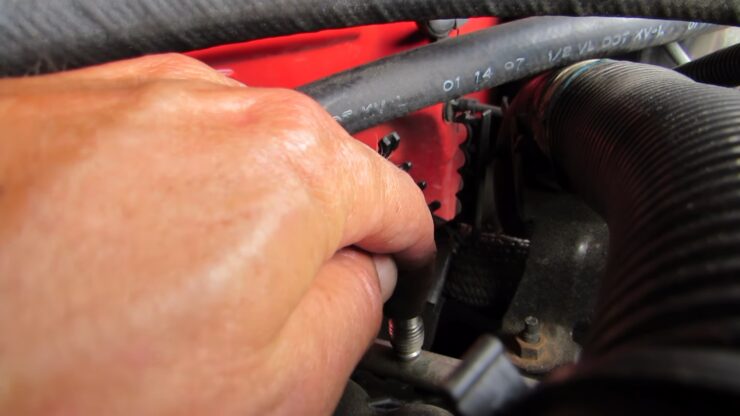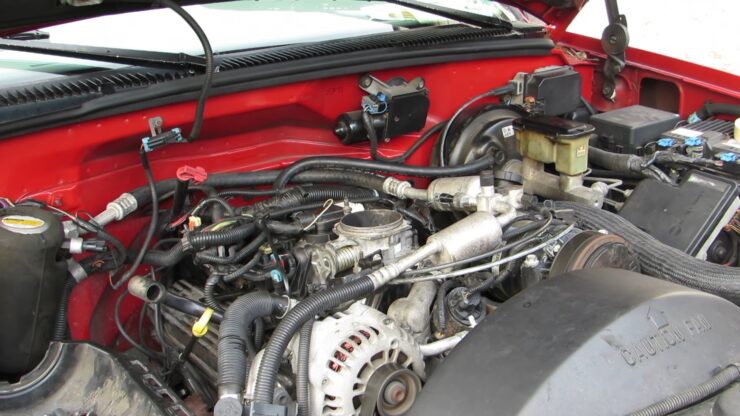Fuel is a car’s engine’s breath. It mixes with air to produce energy, which runs the vehicle. Sometimes you may experience Chevy 5.7 Vortec fuel pressure regulator symptoms gasoline delivery.
Fuel supply issues can be caused by any of these components failing. Amongst the utmost essential gears is the fuel pressure regulator.
It guarantees an amount of fuel is supplied to the engine for combustion. You will notice numerous symptoms if this component fails.
Electronic fuel pressure regulators have replaced mechanical fuel pressure regulators in certain modern cars.
The following are 10 symptoms of a Chevy 5.7 Vortec bad fuel pressure regulator symptoms.
Table of Contents
Top 8 Chevy 5.7 Vortec Fuel Pressure Regulator Symptoms
For reliable gasoline distribution, a vehicle’s fuel pressure regulator must be in good operating order.
The whole internal combustion cycle, on which the engine depends to generate propelling power for the vehicle, would be interrupted if the regulator became faulty or fails in any way.
If your fuel pressure regulator fails or is broken, you will notice a variety of apparent indications.
The eight most typical indications of a malfunctioning fuel pressure regulator are listed below.
1. Leaking Fuel
Gasoline leaking is one of the most vexing fuel pressure regulator symptoms you can face in your vehicle. This device is sealed on both sides.
Fuel can leak via a breach caused by damage to these plugs. Seals, on the other hand, do not endure as long as the vehicle itself.
They are also likely to wear due to continuous use. As seals fail, fuel tends to leak.
Corrosion, the existence of contaminants, and fuel filter problems are all factors. Improper electrical connections can also cause fuel leaks. If you’re searching for signs of a malfunctioning fuel pressure regulator, one thing to look out for is the emergence of black smoke. You’ll see this coming from the exhaust pipe, to be precise. The leakage or structural damage in the regulator causes the release of black smoke from the combustion. With the growing expense of fuel, you must be cautious of what might lead to you consuming more fuel than is required. One of the consequences of a faulty fuel pressure regulator is that it takes up as much fuel as it consumes. Other symptoms, such as leakage, are described in the rest of this page and can be related to the reasons why fuel is squandered. In addition, the air and fuel combination might be off, which is another cause of fuel inefficiency. An engine misfire and lack of acceleration power are the most evident symptoms of a faulty fuel pressure regulator. You’ll be driving when your car abruptly loses power, stutters, or slows down. It may then resume average acceleration for a short period before losing acceleration power once more. This is something you do not want to constantly deal with because it may be harmful while driving. Disabling your vacuum hose from your fuel pressure regulator and checking it for gasoline inside is one definite method to tell whether you have a malfunctioning fuel pressure regulator. When you do this, be sure your engine is turned off. If you have gasoline in your vacuum hose, you have a leaking fuel pressure regulator. If your vehicle won’t start because the engine won’t turn over, the problem is most likely a depleted car battery or a faulty starting motor. However, your fuel pressure regulator may be malfunctioning. Because the regulator controls the fuel pressure and gasoline is required to start an automobile, a malfunctioning regulator can prevent the engine. You may be able to start your car after numerous attempts when the fuel pressure regulator initially starts to fail. However, if the regulator is not changed, it will ultimately stop working, and you will be unable to start your automobile. A faulty fuel pressure regulator might also cause poor acceleration. These are among the first signs that many car users may detect in their vehicles. When you step on the speed pedal, the car does not accelerate properly. It is moving slowly. No regardless of how hard you stomp on the gas pedal, the car will not go fast enough. If you suspect a malfunctioning fuel pressure regulator, remove a spark plug to check for black soot on the end of it. If this is the case, a faulty fuel pressure regulator, among other things, might be to blame. Check the ends of all other spark plugs for soot. The oil burning in the engine’s head is the source of this soot. In this case, you’ll need to change both the fuel pressure regulator and the dirty spark plugs. One of the best features of the fuel pressure regulator is that its function is clearly stated in its name. It adjusts fuel pressure, that’s right. It does this not just for the amount of fuel delivered to the injectors, as well as for the amount of fuel sent to the injectors. A precise combination of air and fuel is required for effective ignition inside the combustion chamber. Running rich too much gasoline describes how this equilibrium swings one way or the other. The fuel pressure regulator controls how much fuel is present and how much pressure is applied to it as it passes through the injectors. There are two types of Chevy 5.7 Vortec fuel pressure regulators: standard manual driven and electronic. Seen how you comprehend what a pressure regulator is, let’s look at how the pressure regulator operates. The fuel pump pulls a certain quantity of fuel from the gas tank when you turn the Key in the ignition. It then passes through a filter before going on to the injectors through the fuel line. It’s then injected and ignited in the combustion chamber. The fuel pressure regulator is a quite recent count to the act. This minor but essential component guarantees that the amount of gasoline supplied via the fuel pump, as well as the amount of pressure it has, does not exceed what it should. If your fuel pressure regulator is malfunctioning, too much or too little fuel may enter the combustion chamber, causing various problems. A fuel pressure gauge, a simple instrument accessible at most automotive stores, is required to check the fuel pressure standard. Close the hood of the Chevy 5.7 Vortec and turn off the engine. To vent the tank, open the fuel door and remove the gasoline cap. Connect the gasoline pressure gauge to the exam port on the rider side of the fuel pipe on the engine. Switch the engine key to “On” without starting the vehicle. On the Chevy 5.7 Vortec fuel pressure regulator place, the fuel pressure regulator can be found under the higher intake uniform plenum on the fuel rail. Its primary job is to keep the fuel pressure at the fuel injectors constant. Fuel injectors spray continuously, and the computer keeps them open longer when more fuel is required. The gasoline pump applies more pressure than necessary to accommodate the higher flow while the vehicle accelerates to maintain a controlled flow. However, regardless matter how long the injectors are open, the fuel pressure must stay consistent throughout them. The regulator permits all of the leftover fuel to be returned to the tank. Because regulators are housed inside the intake manifold’s plenum, testing a Chevy 5.7 Vortec engine fuel pressure regulator may seem complicated. Still, it can be tested, and it’s far easier than you think. For your 5.7L Vortec engine to start, the fuel system requires at least 50 PSI of gasoline pressure. Below is a step-by-step test guide. To the Schrader valve, attach your fuel pressure gauge Insert some rags around it and below the fuel pressure gauge before attaching it to the gas line (in case some petrol runs out when you attach the gauge to it). Activate the gasoline pump by pressuring the fuel system You may accomplish this by repeatedly flipping the Key On and off. Check for gasoline leaks around the Schrader valve after the fuel pressure indicator shows pressure. There must be no gasoline leaks present for the check to be precise. Continue to the following step once you’ve confirmed there are no gasoline leaks. If there is a fuel leak, continue to the next steps. Crank the Engine While watching the fuel pressure gauge, have your aide rev the engine. It’s critical to let someone else start the car so you can visually see the fuel pressure gauge. With this test, you’ll likely obtain one of two outcomes When the fuel pressure regulator fails, the engine will most likely not start, in addition to misfiring. At any cost, the engine won’t start. This is one of the most aggravating scenarios a motorist may face, especially if they are in a hurry. Connect the pressure gauge to the test fitting on the fuel pump. Find your fuel pump test point, which should be near the fuel injectors, and the place where the pump connects to the filter injector rail. The pressure gauge must be attached to a separation joint or a test port. If your fuel pressure regulator is found to be defective after being checked, replacing it is usually the best choice. This can cost anywhere from $150 to over $1000. If the fuel regulator is the only thing that has to be changed, the device costs $40-$500 and service should take a couple of hours ($40-$110 per hour). However, replacing a fuel pressure regulator costs around $250 on average. This sum is little in comparison to what it may become if neglected. As a measure, be on the lookout for any of the aforementioned symptoms to ensure you detect them as early as possible. Another option is to fill up solely at Top-Tier gas stations, which have better average gas quality than others. Pressure regulator plays a critical function in your vehicle’s engine and that you should not neglect it since it may have a significant impact on your vehicle’s overall performance. It’s precarious to be conscious of the signs and symptoms of a faulty fuel pressure regulator, including blackened spark plugs, sluggish acceleration, and the production of black smoke. You won’t have to worry about this problem if you remember these signs and know how to replace a broken fuel pressure regulator.2. Black Smoke
3. Reduced Fuel Efficiency
4. Engine Misfires
5. Gasoline Vacuum Hose
6. Failure of Ignition
7. Poor Acceleration
8. Soot on Sparks Plugs
Chevy 5.7 Vortec Fuel Pressure Regulator: What & Why
How does a fuel pressure regulator work?
Chevy 5.7 Vortec fuel pressure Specs
Chevy 5.7 Vortec Fuel Pressure Regulator Location
Chevy 5.7 Vortec Fuel Pressure Regulator Test: The Complete Procedures
Common FAQs about 5.7 Vortec Fuel Pressure Regulator Symptoms
Is it possible for a gasoline pressure regulator to prevent a vehicle from starting?
What is the best way to test a fuel pump?
What Is The Cost Of Replacing A Fuel Pressure Regulator?
What is the best way to keep a fuel pressure regulator in good working order?
Final Thoughts

